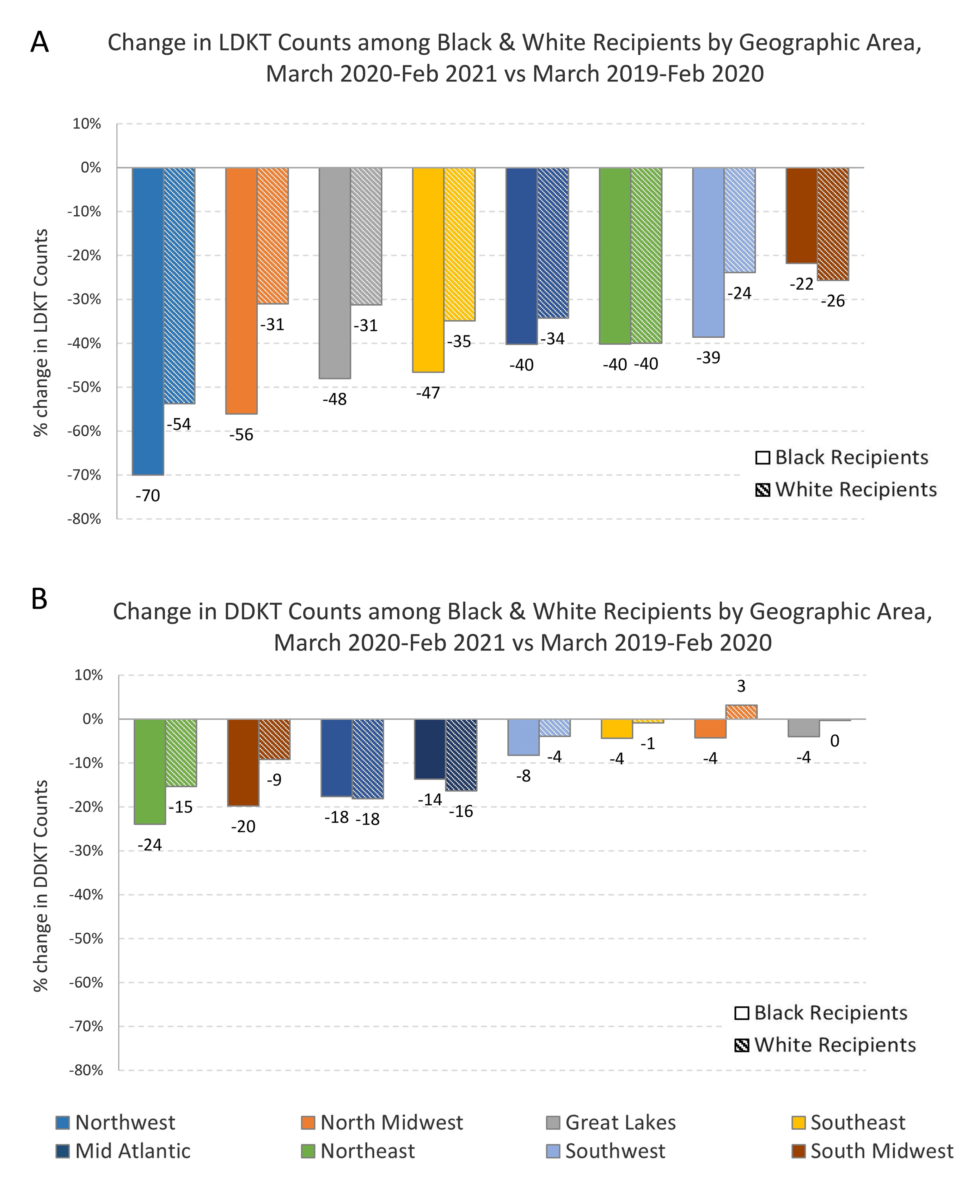Exacerbation of Racial Disparities in Living Donor Kidney Transplant During the Covid-19 Pandemic
1Willis Knighton Health System, Shreveport, LA, 2Saint Louis University, Saint Louis, MO, 3Washington University, Saint Louis, MO, 4Saint Louis University Center for Abdominal Transplantation, Saint Louis, MO, 5University of Nebraska Medical Center, Omaha, NE, 6University of Michigan, Ann Arbor, MI, 7Metrolina Nephrology, Associates, Charlotte, NC, 8Medstar Georgetown Transplant Institute, Washington, DC, 9Hennepin Healthcare Research Institute, Minneapolis, MN, 10University of Iowa, Iowa City, IA
Meeting: 2022 American Transplant Congress
Abstract number: 1040
Keywords: COVID-19, Kidney transplantation, Living donor
Topic: Clinical Science » Kidney » 40 - Kidney Living Donor: Other
Session Information
Session Time: 7:00pm-8:00pm
 Presentation Time: 7:00pm-8:00pm
Presentation Time: 7:00pm-8:00pm
Location: Hynes Halls C & D
*Purpose:
The SARS-CoV-2 or coronavirus disease 2019 (COVID-19) pandemic has disproportionately impacted racial and ethnic minority groups in the United States. Although, kidney transplant procedures decreased following onset of the pandemic, the differential impact of the pandemic on racial and ethnic minority groups remains unknown.
*Methods: We examined kidney-alone procedures captured in the national Scientific Registry of Transplant Recipients (SRTR) analytic files and compared the change in deceased donor kidney transplant (DDKT) and living donor kidney transplant (LDKT) pre- and post- pandemic and the associated factors.
*Results: We found that the counts of LDKT declined more for Black patients in the 12 months following onset of the pandemic, March 2020 to Feb 2021, compared with counts in the same period in the preceding 12 months. LDKT counts among Black patients fell by 42.6% compared with 33.3% in White patients (P=0.02). This pattern of decrease in LDKT counts among Black patients occurred in all geographic areas of the country (based on current UNOS COVID-19 reporting) except for the Northeast and South Midwest (Figure 1). Along with recipient race, other factors associated with a significant decline in LDKT counts included public insurance, Black living donor race, and location of residence. In contrast, DDKT counts for both Black and White candidates declined initially (10% vs. 5.9% lower respectively, P=0.11) during the pandemic and then recovered closer to pre-pandemic levels.
*Conclusions: The COVID-19 pandemic disproportionately impacted Black patients’ access to LDKT. While the current rate of DDKT procedures has recovered in 2021, it is unclear whether LDKT rates will recover to parity. As locoregional surge conditions can have differential effects, ongoing attention to transplant disparities resulting from the pandemic, with appropriately targeted interventions, is warranted.
To cite this abstract in AMA style:
Singh N, Li R, Alhamad T, Schnitzler MA, Mannon RB, Doshi MD, Woodside KJ, Hippen BE, Cooper M, Snyder J, Axelrod DA, Lentine KL. Exacerbation of Racial Disparities in Living Donor Kidney Transplant During the Covid-19 Pandemic [abstract]. Am J Transplant. 2022; 22 (suppl 3). https://atcmeetingabstracts.com/abstract/exacerbation-of-racial-disparities-in-living-donor-kidney-transplant-during-the-covid-19-pandemic/. Accessed December 16, 2025.« Back to 2022 American Transplant Congress

